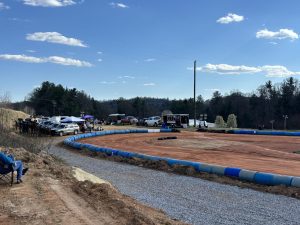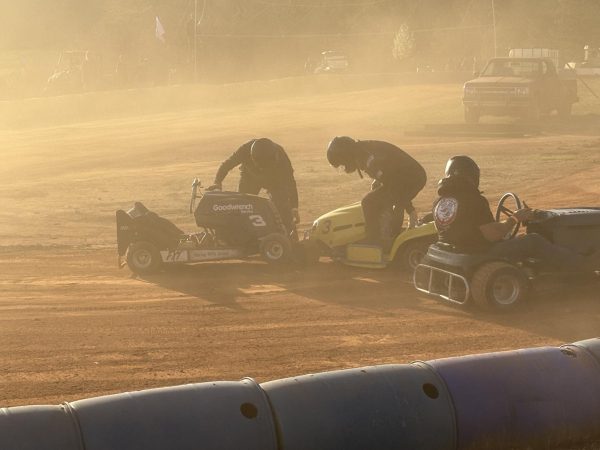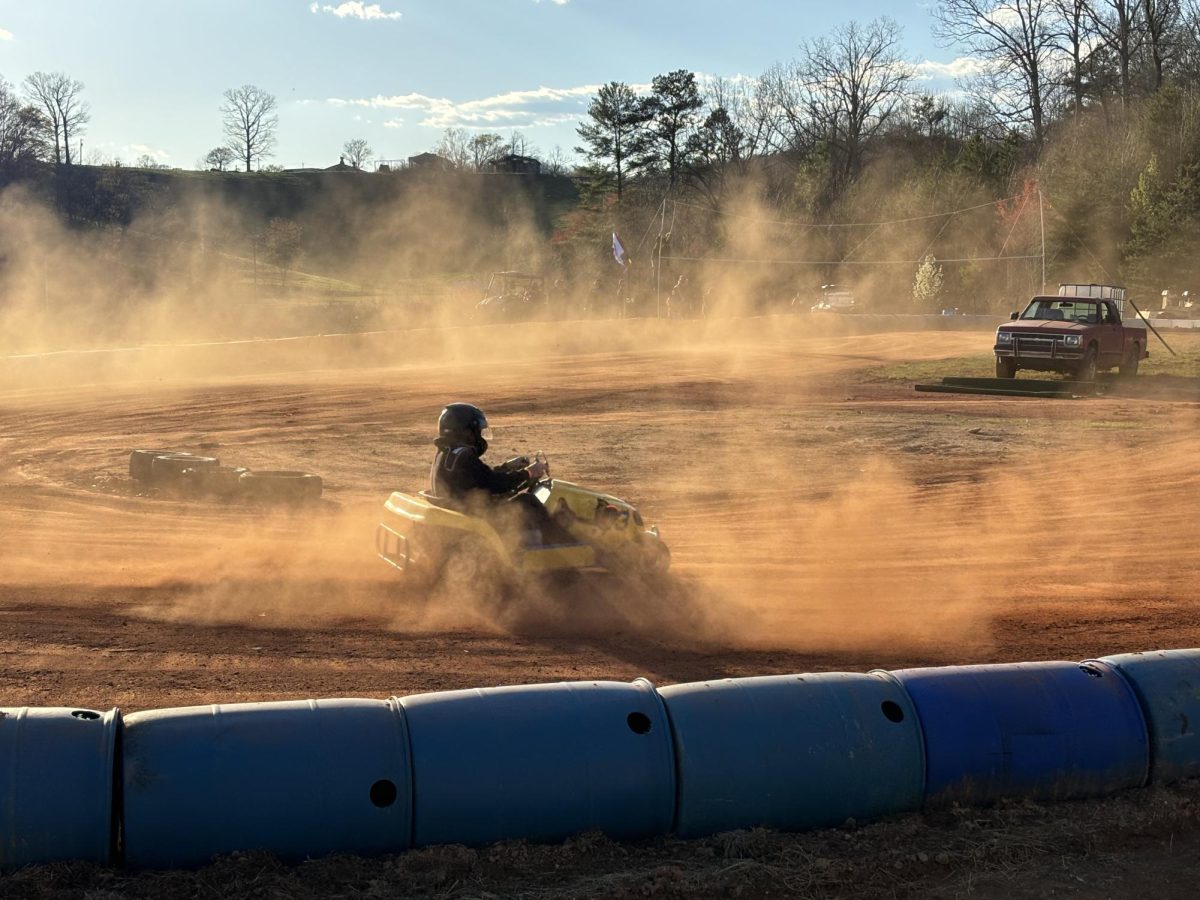Located off of U.S. 421 at the base of the Blue Ridge mountains, Wilkesboro Dragway is one of the oldest continuously-operating racetracks in North Carolina.
This year, the track decided to try something entirely different in addition to their straight-line offerings. During the winter months, they cleared off a plot of land on the northern edge of the property, and built a small dirt oval for lawn mower racing.
In February, the Belt Burners Mower Racing Association formed to sanction races at the newly-constructed track, and a rulebook and race schedule were laid out for the 2024 season. After an open practice day on March 24, the club held their season opener Friday night.

When Wilkesboro resident Matt Hartline heard the news of the track’s construction, he knew it was something he had to be a part of.
“I’m brand new to it,” Hartline said prior to his lawn mower racing debut. “It looked like a lot of fun.”
Hartline competes in the Modified Single class, one of 14 categories sanctioned by the BBMRA. Competitors are divided up based on the driver’s age, chassis type and engine power. The Open class is the premier division, where the rules are nearly non-existent and teams are tasked with building the wildest, fastest lawn mower they can imagine. Many of the mowers in this class are capable of reaching speeds up to 50 miles per hour.
The sport of lawn mower racing originated in the United Kingdom in the 1960s as an affordable alternative to car or motorcycle racing, and spread to the U.S. in the 1970s. Today, the United States Lawn Mower Racing Association serves as the pinnacle of the sport in the U.S., with racers traveling across the country to compete for a national championship.
While the track at Wilkesboro Dragway may be new, lawn mower racing does have a history in the area. The Wilkes County Agricultural Fairgrounds includes a lawn mower racing track, but races are generally held during fairs and other special events. The BBMRA gives racers the chance to compete locally on select Friday nights from March to October.
The club shares a common rulebook with several other lawn mower racing leagues in the region, allowing racers from surrounding states to compete in Wilkesboro without making any major changes to their machines.
One of them was Freddie Kendrick, who traveled to Wilkesboro from Woolwine, Virginia to compete in the inaugural BBMRA event alongside his son, Freddie Kendrick Jr.
Freddie Kendrick is a former drag racer who moved to lawn mower racing five years ago when a track opened near his home.
“Seen it on TV and decided we wanted to get into it,” Freddie Kendrick said.
The father and son pairing race in the Modified V-Twin class, featuring mowers with two-cylinder engines and no strict aerodynamic regulations.

One of the many unique aspects of lawn mower racing is the event format. Unlike NASCAR or Formula 1, which give teams anywhere from 20 minutes to several hours of practice time before most races, lawn mower drivers only have about three warm-up laps prior to the main event to get comfortable with the track and their machine.
“You just hope you’re right when you get to the racetrack,” Freddie Kendrick said regarding the lack of time for adjustments upon arrival. “Hope you’ve got everything dialed in and tuned up.”
When you’re racing lawn mowers that are exponentially faster than they were ever intended to be around a tiny track with a slippery dirt surface, safety is an understandable concern. Helmets are required for all competitors, as is a wrist strap similar to those found on ATVs and jet skis that instantly shuts the engine off if the pilot falls off the vehicle. Additionally, the blade must be removed from mowers in all classes before competition.
One thing missing on racing mowers is a seatbelt. This is primarily so the driver can quickly bail off in the event of a rollover and avoid serious injury. Instead, a piece of padding on the right side of the seat is the only thing stopping the lateral g-forces from flinging the driver off the side of the mower in the corners.
While every racing driver wants to win regardless of the vehicle, Hartline summed up the ultimate goal for everyone who will return to Wilkesboro on April 19 for round two of the 2024 season.
“Just have fun and don’t get hurt,” Hartline said.


